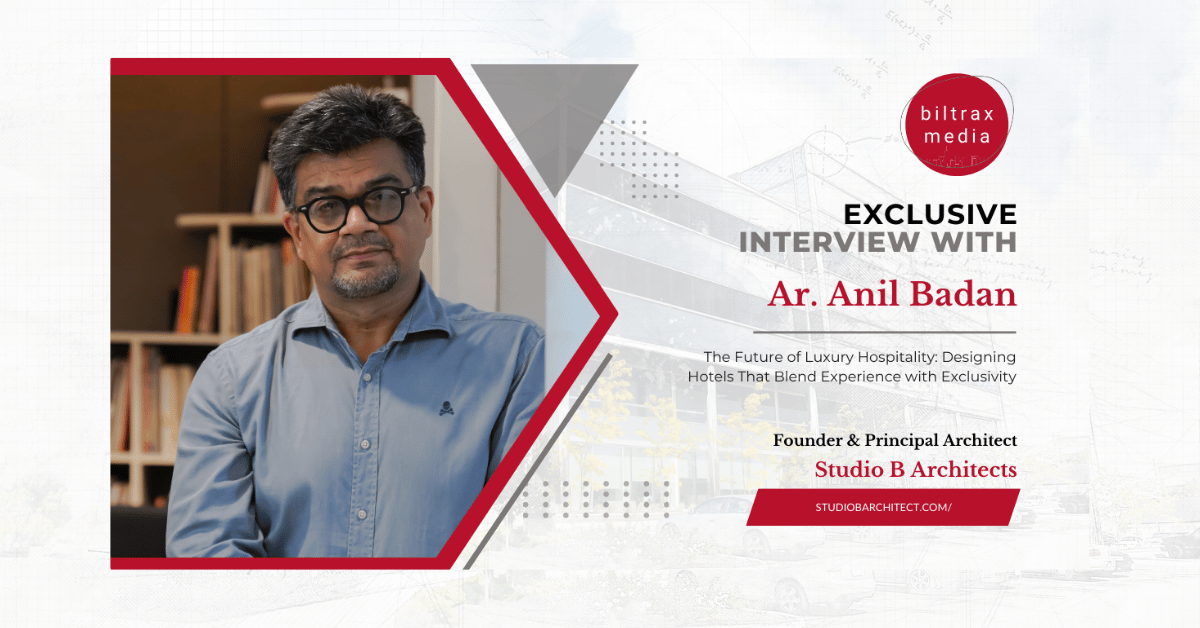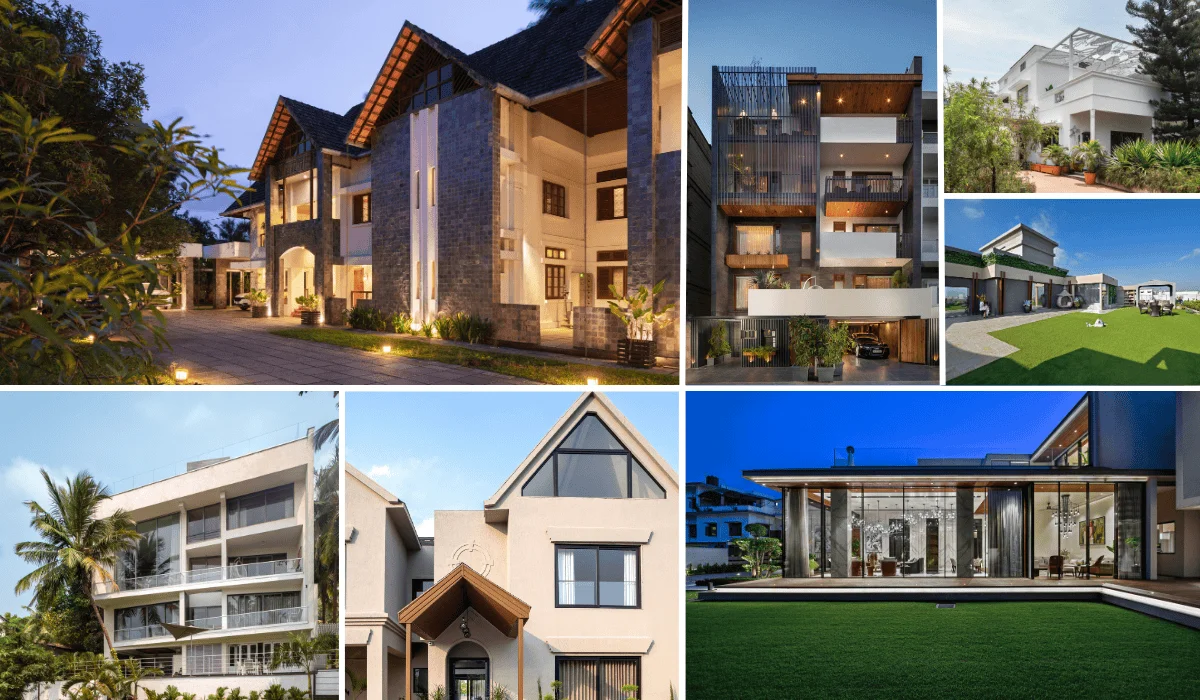The Grid Architects are firm proponents of environment conscious design with purposeful simplicity. Snehal and Bhadri, leaders of the design firm “The Grid Architects”, embark to build dynamic and compelling spaces. Balancing order and invention, their practice is a conscious effort to bar anything cosmetic and embrace functionality. Subsequently, with clarity and simplicity, their designs are closely connected to the earth. Green building rating systems form foundational concepts and act as agents of change in their projects. Their team ideates designs that satisfy an urban lifestyle whilst regarding nature as an inextricable part of living.
Snehal has a Masters in Sustainability and Bhadri is an Interior Designer from APIED Gujarat India. Born in a carpenter’s family, Snehal always sees small ideas developing into enormous results, whereas Bhadri was always inclined towards art and craft. Both are downright believers of the enduring power of mother earth and have a comprehensive approach towards green and architecture altogether. The couple mentions, “The use of green ensemble is a way of inspiring our fellow designers and telling them that our passion and creativity can make an ordinary material transform a space.”
Design Philosophy and Concept of Design
The concept of design being universal also sees Snehal and Bhadri being involved in allied creative pursuits such as furniture design and graphic design. Bhadri is also part of an access group which undertakes the design of Barrier Free interiors and buildings according to international standards. She is an active member of fraternity bodies such as IIID and has helmed IIID’s SPARC magazine for the Ahmedabad Chapter. Their engagement with academia takes them to reputed institutes such as NID, NIFT and other architecture institutes.


The need of the hour is to bridge the gap between college education and practice.
Explaining the state of the profession in our country, Bhadri says, “Architecture education in some institutes is at par with the international standards but these are few. We as a fraternity need to become self-disciplined and organized to give back something to academia.” Snehal further elaborates saying, “The practicing designers, if they find time to teach and exchange their learnings with dedication, would be fantastic. In retrospect if the student’s willingness is channelized in doing better and acquiring knowledge then the whole programme would empower the education system.” The need of the hour is to bridge the gap between college education and practice. Both acclaim for sustainable design education, “We need to teach them the difference between a happy career and a wealthy career.”
Creative, Minimal Sustainable Design
Deeply interested in developing sustainable designs that are hallmarked by creativity and minimalism, Snehal and Bhadri have always focused on natural materials, creating schemes that are therefore rooted to the earth and pay homage to the sky and water. Their inclusive approach invites stakeholders to contribute in whatever measure possible. They assert, “For us, design is a collaborative process that includes a cross-section of disciplines; an emotional journey undertaken along with a client; and a universal entity.” Their design thinking process takes from inception to design brief, problem identification, search for solutions, design development, detail design, construction process together with pre- and post-occupancy evaluations in relation to the design, habits, and functionality.
Re-use, Reduce and Recycle
Re-use, reduce and recycle has become a part of their lifestyle. Their idea of green-building concept extends beyond the building walls to address site, community and land-use planning issues. They gather how IGBC systems nudges one towards better documentation of designs and a disciplined use and disposal of materials. “Initially one may feel that they have to make extra efforts to design a green building, space or interior but once the practice becomes your belief then it becomes a part of the natural process of designing.”
Biophilic Design
Biophilic design incorporated in our design aims to become a reference in responsible architecture, aware of the energy and environmental challenges we face.


Sunlight is one fundamental parameter along with the study of climate for them. Consequently, Earth, Sky and Water govern their design decisions to work with the inner consciousness. They design contextually and source materials and locally. Timeless and minimalism are the themes their work thus underlies. Their honest approach with simple and straight forms simplifies the complexities of a project. One thread that thus ties residential design for them is social integration of families. In their projects, “Screen House”, “Rock House” and “Pixel House”, kitchen-dining-family sittings and bedroom-terrace-veranda are explored as seamless connections.
Materials and Spatial Narratives
Materials often create spatial narratives bringing massive impacts. “Metal Box Office” embodies spaces where art is showcased strategically. It is a curated palette of natural and tactile materials incorporating metal and wood. Selecting materials pose questions whether to go for regional materials or optimise transport costs depending upon product and material life cycle. They explain their material and production process exploration saying, “Each material offers different possibilities in shapes, textures, colours, allowing us to have rich and unique results. Materials play an important role in concept development and design processes which then in turn helps in design solving and evolution of the final product.” They also strategize economic and environmental impact along with the balance of the aesthetics and context of the functions.

In an intriguing discourse, they talk about how people’s choices have evolved due to exposure. A better understanding of their desires is thus noted, thanks to digital media. They quote, “Often rich people go back to mother earth and newly rich go to glamour. Self-awakening matters.” People are driven by influential collective memories often by digital media and influential people resulting in the bandwagon effect – herd mentality. At the same time, people are becoming more conscious about sustainability and saving the environment. The future of design is learning from the roots and adapting it to the needs of a modern world.
Nature and Design
Often rich people go back to mother earth and newly rich go to glamour. Self-awakening matters.


Design sets the trends but trends are temporary; class is timeless. “Functionality, proportions, aesthetics, connection to mother earth and comfort to the end user makes architecture design classic,” says Snehal explaining their humble philosophy. Bhadri elaborates, “There is a huge responsibility because as a designer you are in multiple relationships – to create public awareness and set an example for the next generation; to sensitise through visual and spatial interaction.”
The Grid Architects is currently conceiving design heads like sun path and sustainable materials with low carbon footprint. The Grid Architects are also looking into means to construct environmentally conscious spaces. Purposeful simplicity is what they thus strive for.
The Grid Architects
Visit: www.thegrid-arch.com
Email: info@thegrid-arch.com
Contact: +91- 7940027009
Biltrax Construction Data is tracking 11000+ projects on its technology platform for its Clients. Email contact@biltrax.com to subscribe and generate business leads.
Discover more from Biltrax Media, A Biltrax Group venture
Subscribe to get the latest posts sent to your email.




























